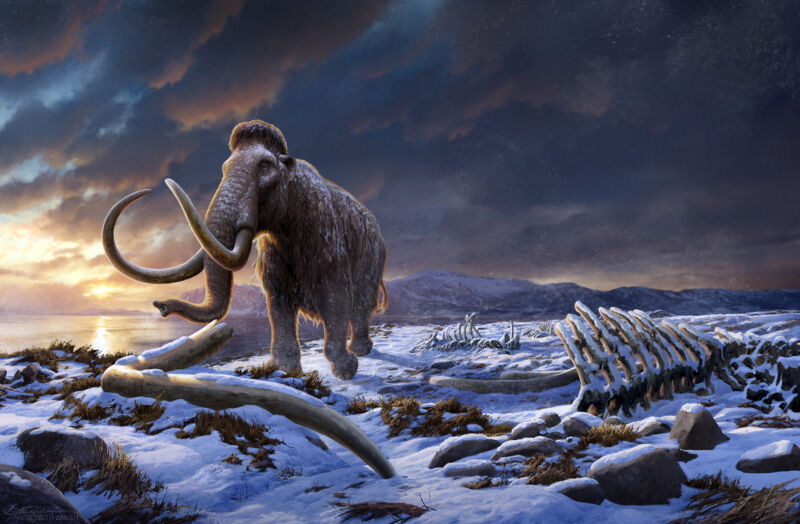DNA from mammoth remains reveals the history of the last surviving population

Enlarge / An artist's conception of one of the last mammoths of Wrangel Island. (credit: Beth Zaiken)
A small group of woolly mammoths became trapped on Wrangel Island around 10,000 years ago when rising sea levels separated the island from mainland Siberia. Small, isolated populations of animals lead to inbreeding and genetic defects, and it has long been thought that the Wrangel Island mammoths ultimately succumbed to this problem about 4,000 years ago.
A paper in Cell on Thursday, however, compared 50,000 years of genomes from mainland and isolated Wrangel Island mammoths and found that this was not the case. What the authors of the paper discovered not only challenges our understanding of this isolated group of mammoths and the evolution of small populations, it also has important implications for conservation efforts today.
A severe bottleneckIt's the culmination of years of genetic sequencing by members of the international team behind this new paper. They studied 21 mammoth genomes-13 of which were newly sequenced by lead author Marianne Dehasque; others had been sequenced years prior by co-authors Patricia Penerova, Foteini Kanellidou, and Heloise Muller. The genomes were obtained from Siberian woolly mammoths (Mammuthus primigenius), both from the mainland and the island before and after it became isolated. The oldest genome was from a female Siberian mammoth who died about 52,300 years ago. The youngest were from Wrangel Island male mammoths who perished right around the time the last of these mammoths died out (one of them died just 4,333 years ago).